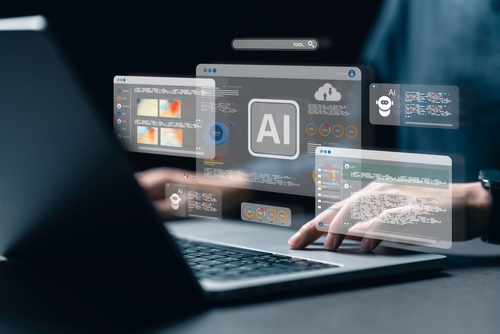Artificial Intelligence (AI) is one of the most impactful technologies the business world has ever seen. It’s affecting almost every single industry with its ability to automate processes, transform data into helpful reports, and make recruitment much less labor-intensive. AI isn’t going anywhere, and if your company hasn’t yet implemented some form of AI technology, it probably will soon. Many companies—especially ones that took a hit during the COVID pandemic—are looking for new ways to revitalize their workflows and make things less dependent on an in-person workforce.
However, AI integration isn’t without its bumps in the road. Much of the technology requires someone who actually knows what they’re doing to oversee implementation, and AI won’t work without capable people managing it. Furthermore, AI can lead to a lot of difficulties in the workplace in terms of employee engagement. It can be an incredible challenge to get your workforce on board with AI. Why is that? It could be any number of reasons, including:
- Employees are afraid: if your company utilizes AI for tasks your employees are used to doing, does that mean their jobs are at risk?
- Employees are wary: New technology is never without hassles and hiccups. Is this going to be a ton of extra work for them?
- Employees are resistant: Change is hard for everyone, no matter what the industry or specific situation is. Is AI going to shake up their routine?
If you can’t get your workforce on board, implementing AI is going to be a major headache—in fact, it may even feel like more trouble than its worth. But if you can convince your workforce that AI is a good thing that’s here to stay, it could revolutionize your company and make things more efficient for everyone. Here are a few do’s and don’ts for getting your workforce on board with AI.
Don’t: Skip Over the Explanation Phase
Make sure you’re taking the time to explain why your company is embracing AI. While a walkthrough is important, this step isn’t about explaining the how of AI, but the why of AI. Employees might start to assume that it’s a simple money-making venture that will allow you to ditch them. But that probably isn’t your mindset! Before you start implementing AI, make sure you host various information sessions and really take the time to educate employees about why you’re making the choices you’re making.
Do: Be as Transparent as Possible
If there is a chance that AI will lead to a reduction in workforce, find a way to tactfully convey that. Obviously, you don’t want to raise unnecessary red flags and send employees running for the hills needlessly. Take your time understanding how this might reshape your workforce before publicly sharing that information. But saying things like this changes nothing! probably isn’t true or helpful. AI does change things, and your employees are grown-ups who can understand that. If roles will shift, change, or fluctuate, be transparent to further build trust. You can also admit you don’t know what you don’t know—don’t be afraid that will make you seem unprofessional; in fact, it will probably help your employees to see you as a human and understand that you, too, are learning.
Don’t: Expect Too Much Too Soon
AI is a new technology. Expecting it to make every single thing your company does instantly easier and quicker is far-fetched. Technology can take time to implement and understand. That also goes for your employees. They may need time to really understand the tech, see the benefits, and throw their support behind it. Especially if you have employees who’ve been around a long time, this new change might feel uncomfortable. That’s okay—you don’t need everyone rolling out the AI welcome mats on day one.
Do: Be Firm When Necessary
However, bad attitudes can also quickly become a drain on the company. If you have employees who aren’t just unhappy about the change, but are loudly complaining about it to everyone they can and refusing to at least learn more, you may need to have a difficult conversation with them about their future with the company. It’s perfectly normal to be anxious or upset about new changes. But it’s unrealistic to expect companies not to embrace technologies that could make them more efficient and effective. At some point, you may have to draw the line in terms of telling people what’s going to happen and what their options are in regards to that change.
Don’t: Disrespect Your Employees
If you have employees who’ve been loyal to your company for decades, new technology implementations may be the hardest for them to accept. That’s completely understandable. Make sure that the way you’re talking about AI is respectful. Saying things like “finally, a more efficient solution!” or “things haven’t been working for ages, so this technology is going to help us finally be a more modern company” could read as hurtful or disrespectful. Make sure your employees understand that they, too, are appreciated and valued—even more so than a robot.
Do: Keep AI as Personal as Possible
Lastly, it’s vital to keep AI as personal as possible. There is a way to do this—people, after all, aren’t just numbers on a spreadsheet. They’re human beings that help your company run and contribute to your culture. When you’re pitching AI to your employees, make sure to focus on the personal benefits it offers instead of just the bottom line effect it may have on your business. For example, take the time to show your marketing team just how quickly AI can sort your customer data, and how much easier it’ll make their lives. Your accounting team might benefit from a walkthrough when they see how AI could eliminate tons of boring paperwork for them. Focus on the way AI helps not just you, but your employees, and you’ll have a much easier time getting everyone on board.
Claire Swinarski is a Contributing Editor at HR Daily Advisor.

